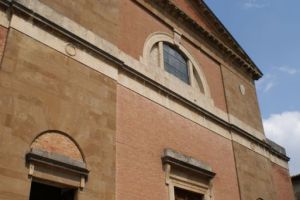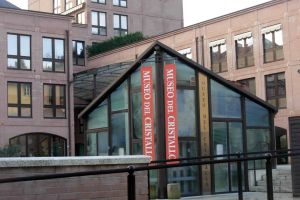The Co-cathedral of SS. Marziale and Alberto in Colle Val d'Elsa
Colle from the 18th century to today
After the plague of 1630, the economy of the city fell into decline, and only recovered in the eighteenth century with the development of industry, especially the production of paper, a sector that gave way in the first half of the nineteenth century to ironworking and above all glass manufacturing. The nineteenth century was thus a period of economic stability, which enabled a number of works on the cathedral and the lower part of Colle. This happy period ended when the city was excluded from the railway line from Empoli to Siena to Chiusi.
In the cathedral, the interior of the two main chapels was totally renovated and their ceilings decorated by Antonio Marini. In 1833 the façade was finally done, designed by the Sienese architect Agostino Fantastici in the neoclassical style. Fantastici structured it using simple geometric shapes, with the two sandstone pilaster strips announcing the interior division into a nave and two aisles. In the central section, built of brick, above the main portal is a large semicircular window showing Saint Martial among coats of arms of the noble families of Colle, designed by Severino Crott in 1930. The façade terminates at the top in a triangular drum similar to the one on the cathedral of Montalcino, also designed by Fantastici. On the plain below, significant urban growth brought a proliferation of public squares and new streets. The . . .




